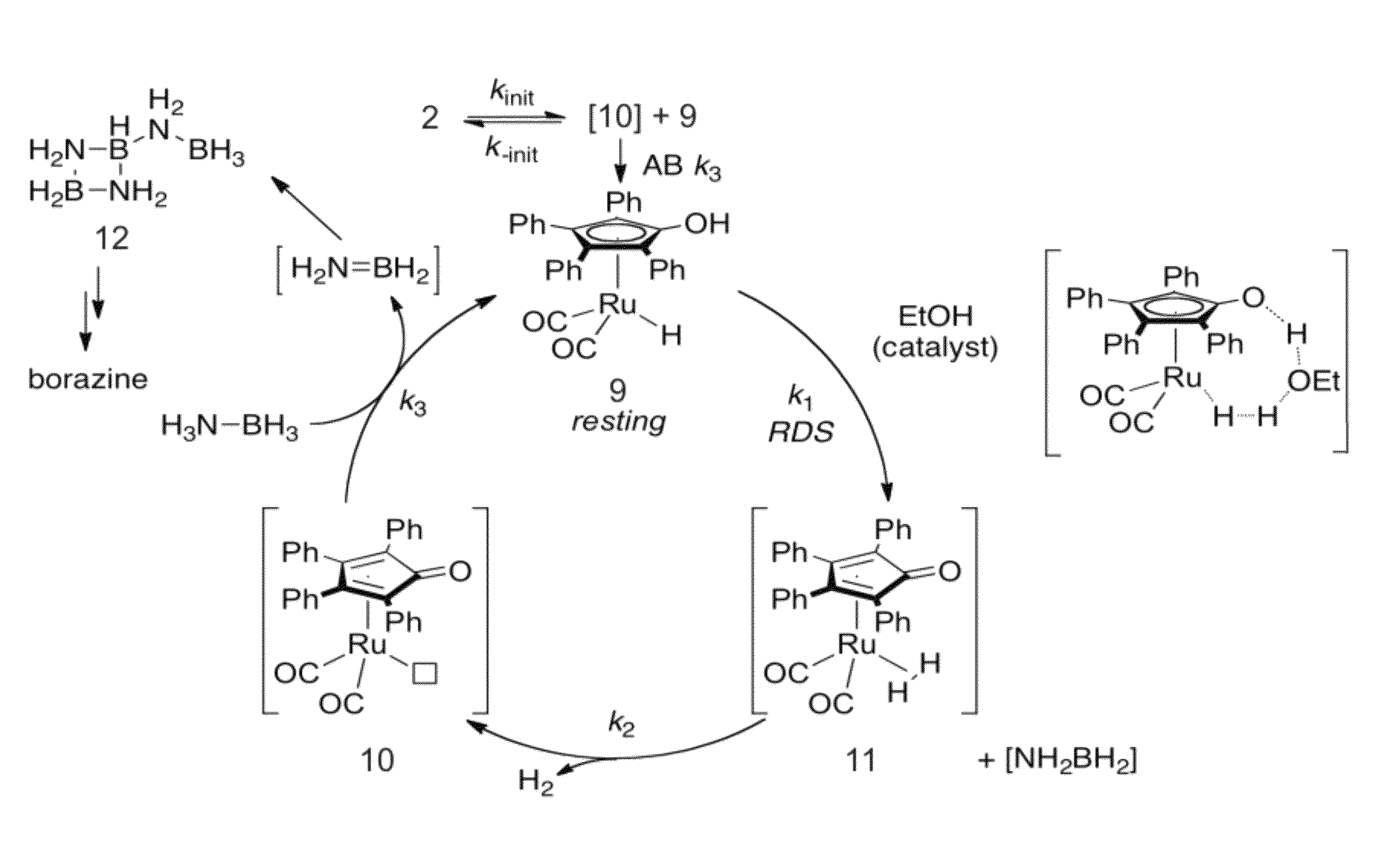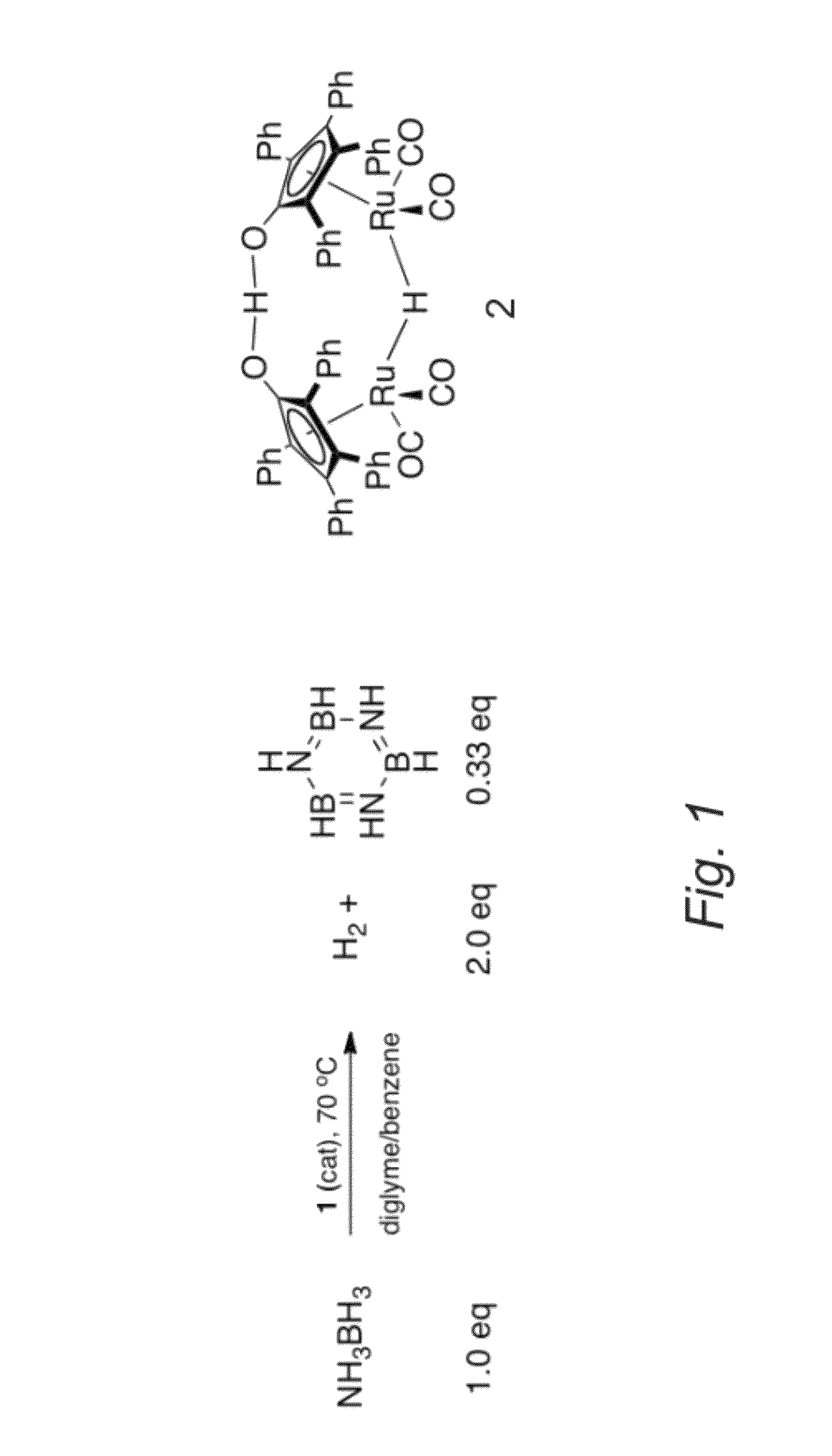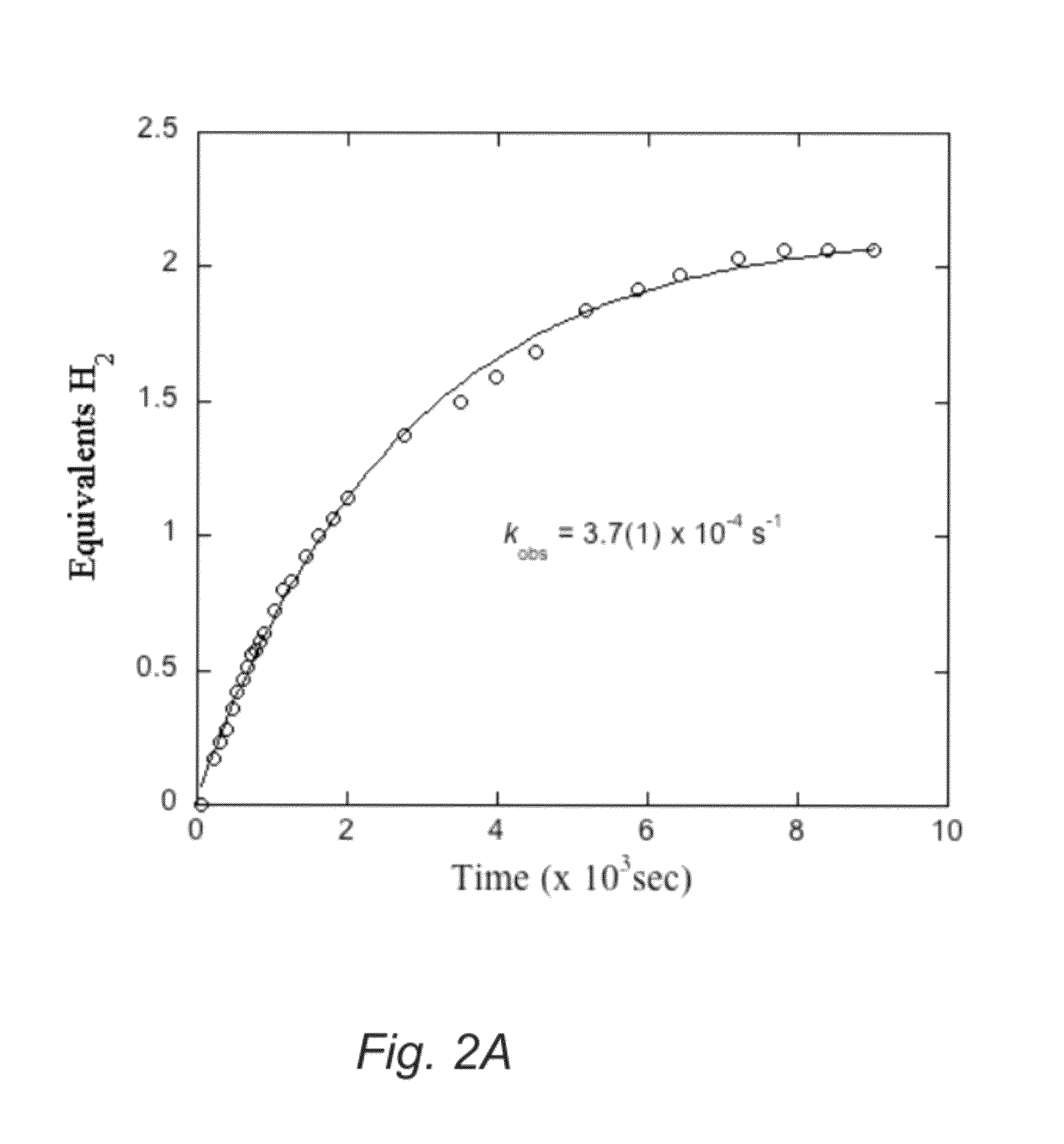Dehydrogenation of ammonia-borane by bifunctional catalysts
a technology of ammonia-borane and catalyst, which is applied in the direction of organic-compound/hydride/coordination-complex catalyst, physical/chemical process catalyst, organic chemistry, etc., can solve the problem of limited use of hydrogen as transportation fuel
- Summary
- Abstract
- Description
- Claims
- Application Information
AI Technical Summary
Benefits of technology
Problems solved by technology
Method used
Image
Examples
example 1
Reduction Using Shvo's Catalyst 7
[0069]Shvo's catalyst (i.e., compound having formula 2, Scheme 1, FIG. 1) enables liberation of 2.0 equivalents of H2 from AB. Under certain conditions, this reaction is complete in 2 hours at 70° C. Equally interesting as this reactivity are the mechanistic data for the reaction. These indicate a kinetic regime previously unseen for the compound having formula 2 and are consistent with a bifunctional mechanism featuring release of NH2BH2 and dehydrogenation of the resulting intermediate(s).
[0070]Catalytic reactivity of the compound having formula 2 with AB in a 2:1 diglyme / benzene solution in a sealed reactor proceeds at 70° C. The solution changes color from bright orange to yellow / brown and evolves hydrogen pressure in the reaction vessel. Hydrogen gas evolution (quantified by a eudiometer) and 1H or 11B NMR are effective tools to monitor the reaction. Under optimized conditions the reaction of 5.0 mol of the compound having formula 2 and 2.0 mol ...
example 2
Ruthenium Catalyst for Dehydrogenation of Ammonia Borane
[0079]The catalyst having formula 3 liberates H2 from ammonia borane (AB) under air in diglyme solutions (FIG. 4, Scheme 3):
[0080]
The efficiency of AB dehydrogenation with the catalyst having formula 3 is evaluated by treating a 0.42M AB solution with 5.0 mol % 1 at 70° C. in a Schlenk flask under air and monitoring the production of H2 using a eudiometer. The system produced 1.94 equiv of H2 in 7 hours (FIG. 5). Added metallic mercury did not inhibit the reaction under these conditions thereby indicating homogeneous catalysis. More practical, highly concentrated suspension conditions have also been examined. A slurry of AB and tetraglyme (100.0 mg of AB, 202.6 mg of tetraglyme, 5.8 system wt % stored H2) was treated with 2.0 mol % 1 at 70° C. and yielded 2.0 equiv of H2 in 4 hours and a total of 2.2 equiv (turn over number (“TON”)=110) upon completion of the reaction. This corresponds to the release of 4.2 wt % H2. In contrast...
example 3
Heterobifunctional Ruthenium-Boron Complex
[0092]The syntheses of agostic complex 20 and pre-catalyst 3 are outlined in Scheme 5 in FIG. 8. The route is initiated with the formation of chlororuthenium adduct 4 from 16 and 17. Treatment of 4 with AgOTf in acetonitrile-d3 in a J. Young NMR tube affects rapid formation of 17 [1H δ(B-Me))+0.09, +0.04 ppm]; solvent then displaces cymene in minutes at elevated temperature to give an equilibrating mixture of 19 and 20 (1:1 at 90° C.), which can be hydrolyzed to give 3 [1H δ(B-Me))+0.29 ppm].
[0093]The spectral data for complex 20 feature 1H resonances at +0.18 and −5.13 ppm (Δδ=5.3 ppm). While the downfield shift is consistent with bonding only at boron, the peak at −5.13 ppm is more consistent with an agostic interaction. In an attempt to arrest the agostic interaction, solutions of 19 and 20 were cooled to −40° C. in acetonitriled and −95° C. in dichloromethane-d2. The upfield signal remained a singlet in each case, indicating rapid interc...
PUM
| Property | Measurement | Unit |
|---|---|---|
| pressure | aaaaa | aaaaa |
| pressure | aaaaa | aaaaa |
| temperature | aaaaa | aaaaa |
Abstract
Description
Claims
Application Information
 Login to View More
Login to View More - R&D
- Intellectual Property
- Life Sciences
- Materials
- Tech Scout
- Unparalleled Data Quality
- Higher Quality Content
- 60% Fewer Hallucinations
Browse by: Latest US Patents, China's latest patents, Technical Efficacy Thesaurus, Application Domain, Technology Topic, Popular Technical Reports.
© 2025 PatSnap. All rights reserved.Legal|Privacy policy|Modern Slavery Act Transparency Statement|Sitemap|About US| Contact US: help@patsnap.com



